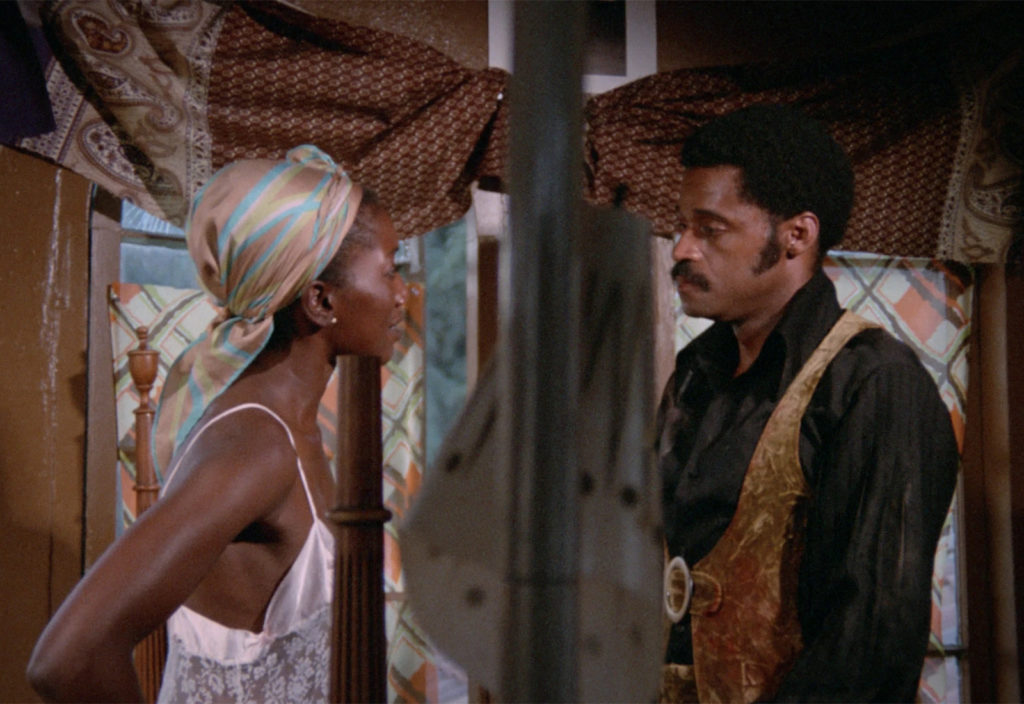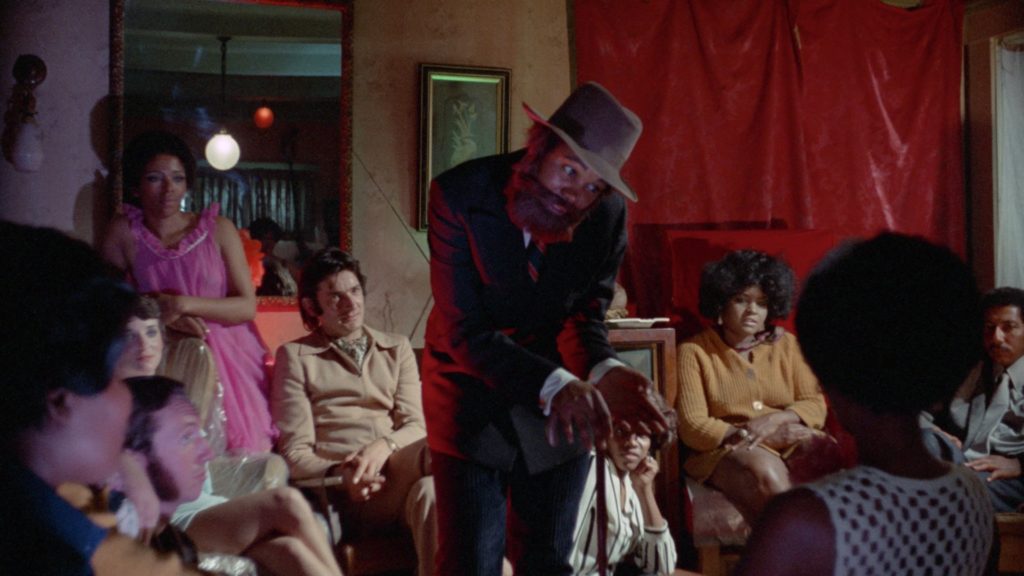A title to a film like Sweet Sweetback’s Baadasssss Song (1971), before even seeing it, can incite a sense of exceptionalism or strangeness. What (or in this case, who) is “Sweetback,” what is “baadasssss” about their song and how does it apply to the film? The preconceived “unconventional” style of the film upon looking at posters, trailers, etc., in comparison to a Hollywood film, stems from a style seen in art cinema filmmaking culture. Though this film is more characterized as a Blaxploitation film than art cinema, there are realist and authorial expressionist features represented in Sweet Sweetback’s Baadasssss Song. The seemingly prudent and arguably “vanilla” nature of classical white Hollywood cinema was beginning to wane in the early sixties. Leaving behind the typical conventions of Hollywood is what made arthouse so appealing and avant-garde at that time. Sweet Sweetback’s Baadasssss Song represents Black cinema defying conventional Hollywood genre cinema by the inclusion of atypical Black characters, storytelling, and “auteurship,” which to this viewer, makes it representative of arthouse cinematics.
Realism might be the most telling feature when recognizing an arthouse film. However, this is not the case for Sweet Sweetback’s Baadasssss Song which had realism; with no money from studios to help finance, the director Melvin Van Peeples independently financed the film. So, they shot on-location scenes in California and the Mojave Desert. The cinematography and editing are evidently a product of the lack of “professionalism” tied to filmmaking. The goal of the film was not to align itself with Academy Award-winning standards or Hollywood. It provided a “for us, by us” film expressing the racism, treatment, and lives of Black people in the United States from a realist perspective. Yet, I felt not every scene warranted the term “realism.” About 15 minutes into the film, after Sweetback kills the two cops to save the Black Panther who was being attacked, the shot of the oil-pumping machine in the nighttime becomes psychedelically disorienting as the image tints and shows different colors blending. It was visually very spacey and distracted from the initial realist direction. There is a similar instance later in the film where a sequence shows a woman talking, as if it’s a documentary, initially close-up then shifts to medium and close-up many times as the scene seems to repeat itself at least 5 times with her telling a story, juxtaposing different shots of Sweetback still on the run from the police. This was another very disorienting part of the film. Another point of inquiry I had was the “Black Greek choral” soundtrack that played throughout the film—did it fall under a realist category? The non-diegetic sound came as a commentary or narration to Sweetback’s story. But I also argue that it was a part of Sweetback’s subconscious too. The constant reminder that he was running away from “the Man” and there is a historical significance to Black people singing about hardships and their history in America. Most Black-Americans have that awareness and reminder in their subconscious as those struggles are a part of their daily lives and I believe the chorus represented that.
The ambiguity of the character is another key style to arthouse cinema. Sweetback was very passive but simultaneously is somewhat a hero character. It is not clear what his goals and motivations are exactly, only that he is running away from the cops, representing “the Man,” and, in the larger thematics, white oppression. We know that he is a prostitute, he is Black, and he is wanted by the police for the majority of the film. Besides that, we don’t learn so much about his character. In fact, Sweetback doesn’t speak much throughout the film. Instead, the film focuses on his actions and the actions of others. The key moment for me in the film is the scene where Sweetback is recruited to help the white cops. They pick up a Black Panther member and then proceed to take him to a secluded area where they beat him up. There is a close-up shot of Sweetback’s passive-looking face as the cops belittle and beat the Black man. Then, an out-of-frame shot suggests Sweetback has killed both cops using the sharp edge of his own hand-cuffs (though you never fully see the violence). The lingering close-up shot of Sweetback’s face represents his psychological complexity, this is important to the arthouse cinematic form because it leaves room for interpretation about what’s going on with this character. It is not obvious in the film that Sweetback was in any way a Black Panther or important activist in the Black community. Again, it seems his passivity only confuses his actions. However, in my understanding, the film speaks to a larger psychological complexity that is racism and white oppression’s effects on the Black community that isn’t always blatant.
The director, Van Peeples, used the film as a platform to represent Black-Americans as more than caricatures or villains than how they have been represented historically in cinema. The opening scene to the film features cartoon-looking red letters reading “Sweet Sweetback’s Baad Asssss Song, starring “The Black Community and Brer Soul.” Peeples doesn’t leave much interpretation about what the film is representing. His purpose is to give Black people a space to tell their stories and though the film is not a political one, it is definitely politically motivated by the director. Another homage is paid at the beginning of the film as well as we see a foreshadowing long shot of Sweetback running in a dark street. There is a freeze-frame of Sweetback running and the image zooms closer with an appearing text that reads: “This film is dedicated to all the Brothers and Sisters who had enough of The Man.”
Though this film is said to be one of the first Blaxploitation films to appear, I say that it is more an arthouse film than purely Blaxploitation. This film was made by a Black man to represent more positive Black roles in film and wasn’t made for capital gain. I think that is where it differs. As well, this particular film follows the conventions that many New Wave and other art cinema genre films did as well at that time, even outside the United States. With the inclusion of maybe some avant-garde scenes, the film took a very realist approach to tell the story of a Black man’s escape from oppression and corruption. With that film’s message in mind, it also represented the start of escaping the conventions and white normativity that dominates classic white Hollywood cinema.
Incluvie Score: 5
Movie Score: 4

